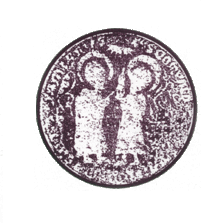Statute of Lastovo

The Statute of Lastovo, called even Statuto di Lagosta or Codex Lagostinum (Croatian: Lastovski statut), was written in 1310.
History
After centuries of partial autonomy under the Republic of Venice, the local inhabitants of the island of Lagosta (now called Lastovo) codified its common law and wrote up its first written legislation.
Indeed, the people of Lagosta voluntarily joined the Republic of Ragusa in 1252, after the republic promised that it would honour Lagosta's internal autonomy. This agreement was codified in the Ragusa Statute written in 1272.[1]
In 1310 Lastovo got its first written legislation, the Codex Lagostinum, which had all the characteristics of law.
The statute is written mostly in Italian but contains a few Latin sentences. The statute also contains some Croatian folk names at the time of writing in 1310, because the original Dalmatian neolatin population of the island had nearly disappeared after epidemies and wars.[2]
Sources
- Povijest Lastova (Croatian)
References
- ↑ Lucijanović, Marin (1954). Lastovo u sklopu Dubrovačke republike (in Croatian).
- ↑ Lagosta's Neolatin population